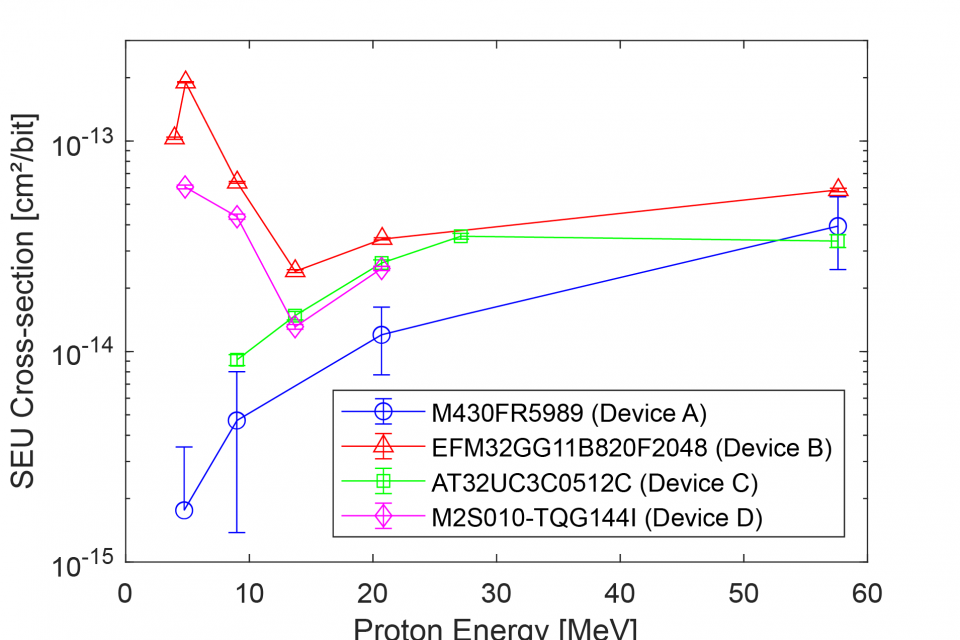Datasets
Standard Dataset
Stefan Damkjar NSREC2020 - 2018 Testing at TRIUMF
- Citation Author(s):
- Submitted by:
- Stefan Damkjar
- Last updated:
- Thu, 10/29/2020 - 18:20
- DOI:
- 10.21227/ftaj-2r87
- License:
 56 Views
56 Views- Categories:
Abstract
Abstract--- Proton beam testing was performed on several microcontrollers using proton energies between 2.4 MeV and 57.6 MeV. A remotely operated robotic testing platform was developed to improve testing throughput by minimizing the need for human intervention in the radiation vault. Sensitivity to SEU, SEL, and SEFI faults was determined. Some of the devices showed high SEU sensitivity when tested with low energy protons between 5 MeV and 10 MeV while others did not. We show that this could be due to some devices having a lower critical charge needed to cause SEUs. Consequences of this low energy peak on error rates in orbit are determined. For one of the devices tested, we show that a thin 0.37 mm layer of aluminum shielding reduces the in orbit SEU rate to 0.085 times the SEU rate with no shielding. Testing was also done while varying the incidence angle of the proton beam which shows that the rate of SEL and SEFI faults increased significantly with shallower incidence angle.
Each test folder contains 6 files:
Four files with data collected from each of the four devices under test being tested during that test. These files are named according to the position of the corresponding device under test on the testing mechanism. These files are referred to below as DUT files.
A file called "CURR" with current sensor data
A file called "paramaters.txt" with information about the test
Each line in each DUT File Format has the following comma seperated values:
A time stamp with hours, minutes, seconds, and milliseconds indicating time since the testing mechanism was reset
A number and letter indicating the position of the device under test on the testing mechanism
Data sent from the device under test
Data sent from a device under test could have the following formats:
ram - Indicates beginning of ram test
DR:48,fffb,ffff - Indicates a memory error. The comma seperated values are the index on the testing array, the value read, and the value expected
RE:23 - Total number of errors from the last ram memory test cycle
nvm - Indicates beginning of a CRC test
CRC:9ae9482a - The result of the last CRC test
end123 - Indicates the end of a test cycle and the total number of cycles that have completed since the device under test was reset
Each "CURR" file has the following tab seperated values:
A time stamp with hours, minutes, seconds, and milliseconds indicating time since the testing mechanism was reset
Four current values in mA in order of the "A", "B", "C", "D" positions on the testing mechanism
"parameters.txt" has the following values:
Degrader position indicating proton energy (200 = 57.6 MeV, 850 = 48.8 MeV, 1650 = 35.5 MeV, 2050 = 27.1 MeV, 2300 = 20.7 MeV, 2500 = 13.7 MeV, 2600 = 9.0 MeV, 2700 = 4.8 MeV, 2750 = 3.9 MeV, 2800 = 2.4 MeV)
DUT motherboard number indicating the position of the testing mechanism
Total monitor counts from the current test, indicating the fluence of protons. Each monitor count represents 5.9E4 protons/cm2
The incidence angle in degrees
The time in milliseconds corresponding to the time stamps in the data when the proton beam was activated






